I finally decided to write something in detail about the Ukrainian “incursion” into Kursk, as Wikipedia is calling it (bad guys do “invasions,” good guys do “incursions” and “interventions”). Nine days into this thing, what can be learned from publicly available information? What’s most interesting to me is that I actually predicted such a northward attack… a year ago. It’s what I expected the 2023 “counteroffensive” (that’s not even what “counteroffensive” means but whatever) to look like. So I was wrong, but also right. Ukraine did decide to attack North, just over a year later. I’ll explain the significance of that shortly but before getting too deep into this discussion, let’s dispel some silly ideas I see making their rounds on the internet.
First off, I don’t find it particularly likely that the Ukrainians were going for the Kursk Nuclear Power Plant. If that was their plan, it wasn’t a very good one. The Ukrainian forward line of troops is not even halfway, and unlikely to get much closer. Also note that getting a few tanks and pickup trucks 30 kilometers into Russian territory is not the same as getting a HIMARS 30 kilometers in. Any piece of equipment that crosses the border on a risky mission like this has to be acceptable to lose. I find it unlikely that the USA is willing to risk their prize wunderwaffen falling fully intact into Russian hands, especially considering how conservative they’ve been with HIMARS so far.
Ukrainians are actually deep enough, at least allegedly, to attempt long-range attacks like that. The fact that they haven’t suggests that the Kursk front is much more fluid than pro-Ukrainian sources want to admit.
Another even more silly rumor I’ve seen was that the Russians knew about this attack in advance and it’s all an elaborate trap. A similar claim was made about Israel during the October 7 attacks and I don’t believe that one either. People don’t deliberately allow Pearl Harbor attacks on themselves. There’s just nothing to be gained from it.
In reality, no border is secure. Stringing the armed forces along every inch of the border is impractical and doesn’t work. Even famous ancient defenses like Hadrian’s Wall were not intended to halt an enemy invasion. The structure itself was a speed bump, enough to deter casual cross-border incursions and trafficking, but the “meat” of the defense lay in garrisons behind the wall.
The principle is the same now. An unexpected largescale attack has to be stopped by after they’ve already crossed the border. In my post about the Russians’ Kharkov offensive I said:
That is why both sides of the Ukraine conflict prefer to have their forward positions as thinly manned as possible. If a squad is enough to properly man a trench to maintain observation and fight off light attacks, then that is the maximum number who should be in the trench. 2 or 3 squads are just extra bodies under combat stress and at risk of becoming casualties. If a heavy attack is incoming, then reserves can be called up, then dispersed after the attack is over. This is called flexible defense. Manning 100% of the frontline with enough forces to defeat an offensive at any point is an incredible waste of manpower and resources.
I went on to say:
Apply everything I just said to the operational level in Ukraine. In Autumn 2022 the Ukrainians had a large numerical advantage. So the Russians ceded territory to shorten the frontlines enough to void the Ukrainians’ weight in numbers. Now due to Russian mobilization and Ukrainian losses, the situation has reversed. Russia could dump an additional 50,000 men into the existing fronts in Donbass, but that would be counter-productive for the reasons I explained. At this point, it is most logical to open up a new front. This gives newly-raised Russian battalions something to do and stretches Ukraine’s meager manpower.
So maybe Ukrainians were planning a northern incursion into Belgorod like I had predicted. But ultimately I was wrong and there are two likely reasons for why. Russia did their own offensive from Belgorod so is too strong a point to attack. The Russian offensive also didn’t get particularly far, which brings me to my second reason. Belgorod and the adjacent Kharkov are too significant and well defended. Ukraine’s attack into Kursk made significant progress for the exact reason it was unexpected and lightly defended.
Kursk was lightly defended because there isn’t much there. The region’s population is around 1 million, and close to half of that in the city of Kursk itself. Realistically, how large a force is Russia going to have guarding some nearly empty woods? Failure to anticipate the attack was certainly an intelligence failure, but it is just as much a Ukrainian success. They didn’t spend months boasting about preparing for an attack on Kursk and make theatrical trailers about it. With sufficiently good operational security, Ukrainians could plan and stage for an invasion, sorry, incursion, without drawing attention to themselves. Remember that the battle space is large, but it is not that large. This means the majority of participating Ukrainian units could be notified within 24 hours, then moved to that front in 12 hours. There would be no need for a dramatic buildup of troops that would draw attention.
But that raises an interesting point of contention. Just because you can doesn’t mean you should. Yes, Kursk region was lightly defended, but it was lightly defended for a reason. Occupying some trees and cows does not accomplish anything in of itself. In my Kharkov article I said it made sense for Russia to extend the front because they have a superiority in numbers and resources. Hold that thought for now.
One of my biggest takeaways from this Kursk development is just how dead the “Blitzkrieg” popular culture theory is. I have said over and over again that the war in Ukraine is a clear demonstration of what a 21st Century peer-on-peer conflict looks like. The days of astonishing “lightning” offensives like in 1940 France and 1941 USSR are over. Back then, armies were still fighting with mules and horse carts. If the enemy attacked and defeated the army closest to them, there wasn’t anything that could be done about it except wake up the mules and have them trudge in that direction. But now it’s a whole different game. Transportation, logistics, and communication are so good now that any attack on an equal opponent, no matter how well planned and executed, will be stopped fairly quickly and from that point onward there will be no significant territorial gains until one side is exhausted and collapses.
It’s a classic case of armchair experts confusing cause and effect. Territorial loss do not cause an army to collapse, an army collapsing causes territorial loss. With the ability to quickly move vast quantities of manpower and material great distances When armchair experts say “the Ukraine war is like World War I,” that means they do not understand the war in Ukraine or WWI. Armies in 1914 were larger, faster, better equipped and supplied than ever before. That’s why the war escalated into a race to the sea, then a grueling fight for the same muddy trench. In previous wars, when a trench was lost the battle was over. But in WWI the losing side could rapidly bring in sufficient reserves and firepower to retake the trench. Today, both sides can move whole armies from one end of the country to the other within 24-48 hours so of course there is going to be little tangible territorial progress one way or the other.
And also, this makes retreats different. If the losing side is ordered to withdraw, or just decide to withdraw on their own volition, escaping is generally much faster and easier than it was 80+ years ago. That’s why it’s exceedingly rare for either side to capture small groups of soldiers captured. Thousands or tens of thousands of soldiers being trapped in a pocket just isn’t happening anymore.
Consider this diagram of what a German “Blitzkrieg” is supposed to look like, and a Soviet “Deep Operation” for comparison:
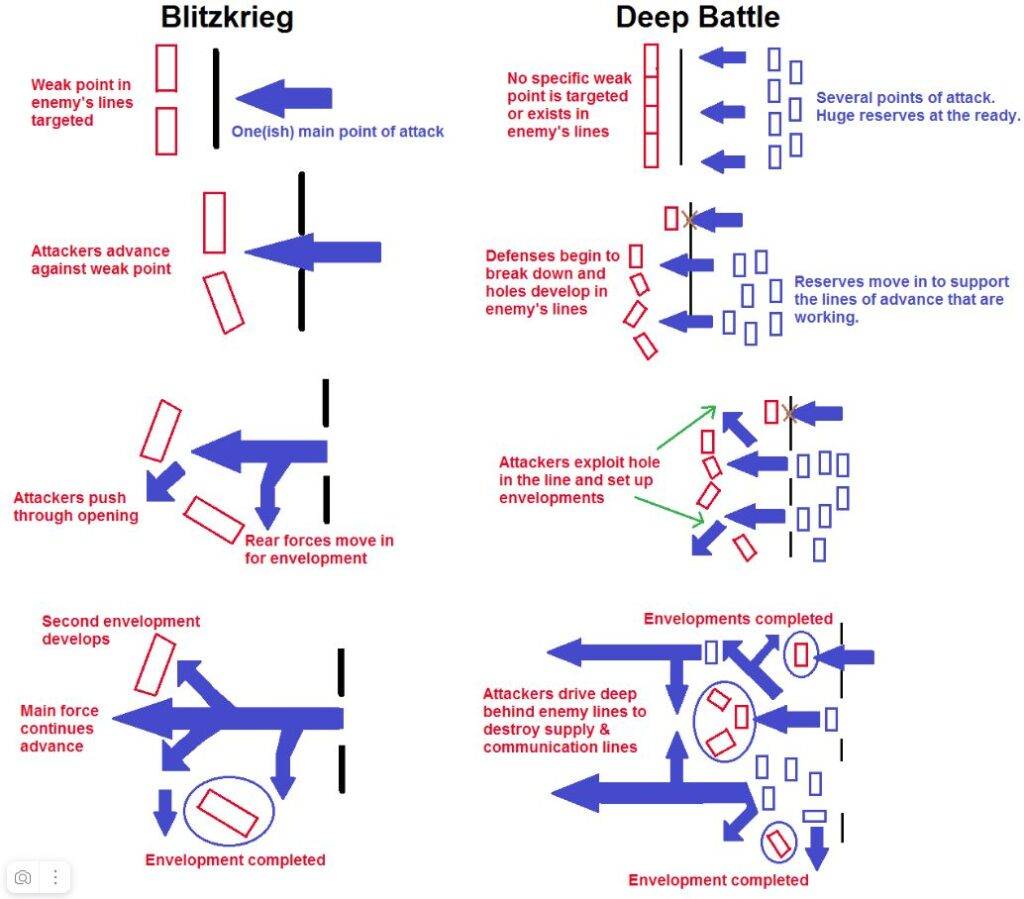
Both of these maneuvers depend on the enemy just sitting there and letting you cut him to pieces. That was doable in 1943, but not so muc hnow.
Look at how the Kursk front developed. Here are the Ukrainian claims from August 6:
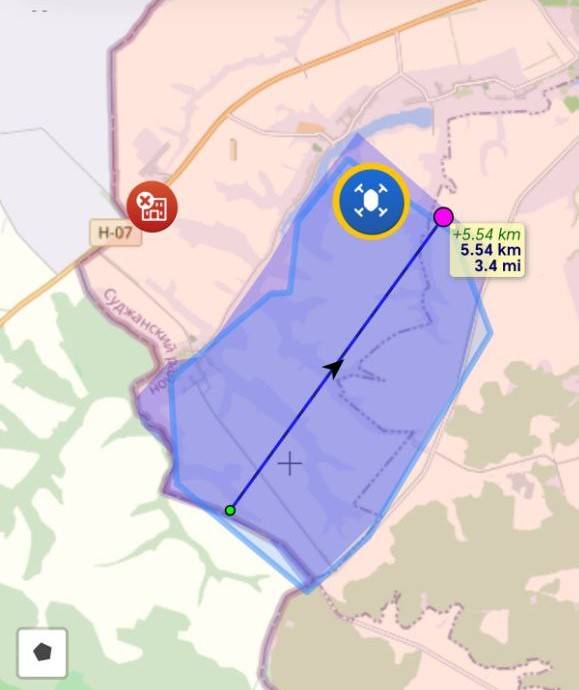
This is a 5km advance on a 4km wide front, which is doable by a battalion of 300-400 men. That’s my estimate assuming a company of 100 on the offense covers about a 1km front. And my guess is consistent with what was being claimed on Telegram that day).
Here’s the pro-Ukrainian claim for now, nine days later:
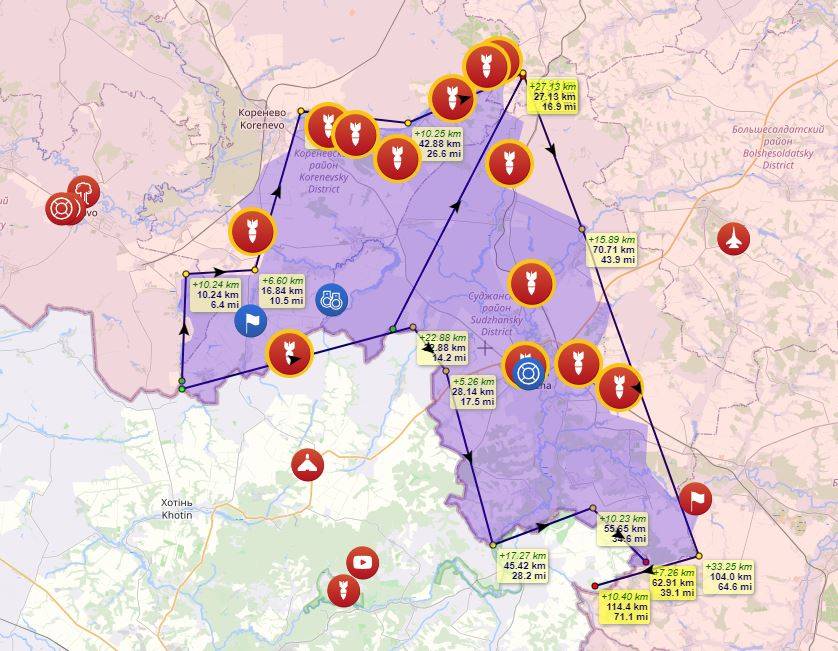
The front is a little over 100km in total, which again is consistent with estimates that there are about 10 to 15 thousand Ukrainian troops committed.
Bottom line, there is just not much new happening here. There was no blitzkrieg. There were no dramatically large numbers of enemy troops surrounded and captured. And there certainly was no “envelopment of the enemy rear.” Mainly, because there is no “rear” in a modern war. No undefended targets, no soft underbelly, just more enemies.
Remember when I said just because you can doesn’t mean you should? The Donbass front isn’t looking good. This was Niu York yesterday. and there has been further progress since then:
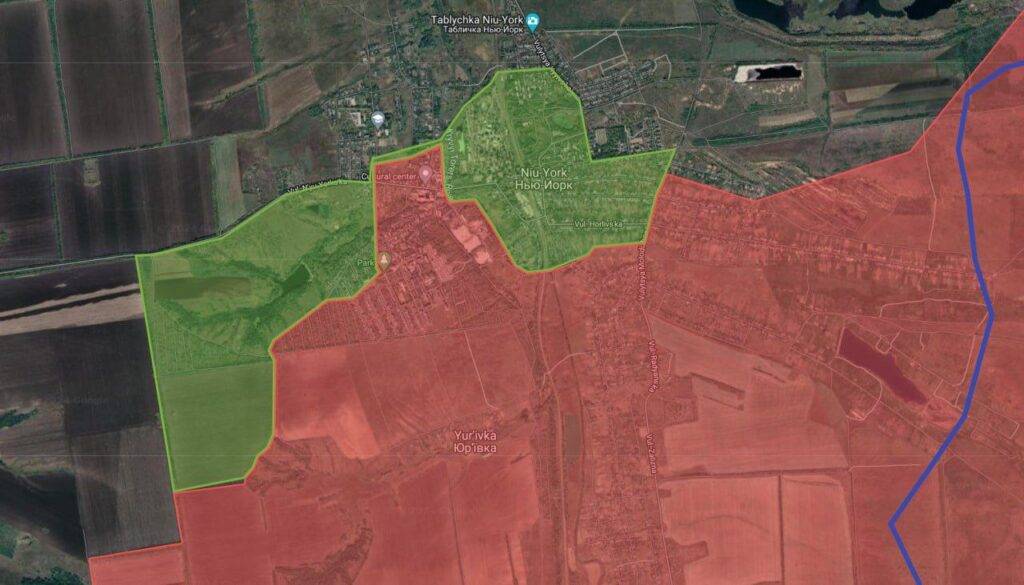
Compare this to Artemovsk or Andreevka. Last year or even six months ago, such progress would have taken weeks if not longer. And this is happening all up and down the front. This should not be happening at all. Ukrainian defenders must be catastrophically short on reserves if they’re being pushed aside this easily. That might partially be due to re-routing resources to Kursk but I don’t think that’s the full story. Even the most lowball estimates of the Ukrainian Armed Forces of being under 300 thousand troops is still enough to do better than this. Some pro-Russian commentators are saying Kursk is the UAF’s last stand but I don’t buy it.
Time for predictions. I think this is a longterm occupation of Russian territory. That doesn’t make any sense, but it is consistent with Ukrainian refusal to give up any ground anywhere. There might be an attack on a second axis but I find that to be unlikely. It was doable in 2023 but probably not now. However I won’t completely dismiss the possibility. They may plausibly launch supporting incursions, but with the goal of connecting with what they have already. But they will pour more resources into holding and expanding their current cauldron. They’ll likely try to make it wider at the border, but also deeper. The meme of our panzers striking X miles into Russian territory is more than worth the lives of a few thousand Ukrainians.
Ian Kummer
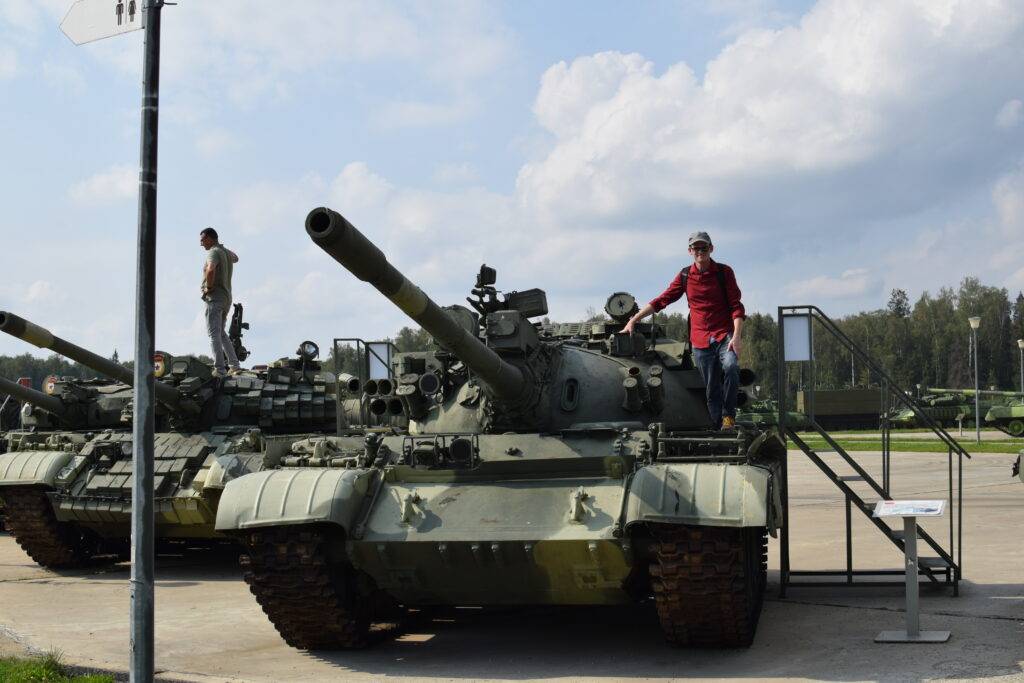
All text in Reading Junkie posts are free to share or republish without permission, and I highly encourage my fellow bloggers to do so. Please be courteous and link back to the original.
I now have a new YouTube channel that I will use to upload videos from my travels around Russia. Expect new content there soon. Please give me a follow here.
Also feel free to connect with me on Quora (I sometimes share unique articles there).


They seem to be getting more long range missiles from the States. I don’t think NATO buys the bs about their victory, but they could pretend they do to send more weapons. …and kill more Russians.
The Kursk offensive was the last best chance for a gamechanger by NATO and its Ukraine proxy. And yes, the goal was the Kursk NPP. And both the leadership and planning were faulty, thereby assuring failure. But had it succeeded, yes a long shot under the best of circumstances, things would be significantly different today.
What would success have looked like? If a Guderian type leader (new ideas never before seen) had completed the short sprint to NPP, captured it, surrounded it, loaded it with explosives such that it became the world’s largest potential dirty bomb, and then held it hostage pending negotiations with Moscow; the threat of Chernobyl 2.0 would have been seriously problematic for Russia. Real leverage would have been acquired. Most long shots fail, but I doubt that this is a battle MoD wanted to have to fight and take on the risk of potential disaster.
My seminal point is that Russia should not underestimate NATO desperation and willingness to do evil things. The US Army in WW2 had its worst month of casualties during April 1945 just before the German capitulation. The Kursk offensive is not about an academic study of battle tactics. It’s a warning that a wounded cornered rat is the most vicious of vermin.
It is worth pointing out that Guderian himself made big promises about capturing Russian territory and failed so badly Hitler reassigned him.
At least 2 Challenger II tanks have been knocked out in Kursk, so the AFU is throwing everything it has to spare at this operation.
If UKA has 15,000 men in the salient then how many will Russia have to devote to contain them?
About 15 thousand
I’m not sure they do. That would need a huge amount of resupply which is an easy target for Russian ranged support fires/drones. I’ve yet to see any photo or video evidence of a larger than company-sized engagement inside Kursk.
It is admittedly a difficult situation to read from publicly available information alone
A lot of Ukrainian equipment has been destroyed on the Sumy side of the border. Russia was already hammering the troop concentrations there for several days before the attack.